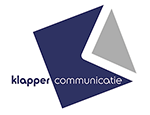In 2016 2,22 billion social media users are registered. Every day 500 million tweets are posted, 95 million photos are uploaded to Instagram and 300 hours video are uploaded to YouTube. Sharing, liking and engagement are important goals for marketers to spread their marketing communication brand messages on social media and therefore plays a considerable role in marketer’s creative strategy. In this blog I will discuss recent research articles about drivers of social media sharing, liking, and engagement.
Content factors
The research articles show us that emotional content drives the sharing behavior of social media users, for instance New York Times news articles that induce emotions are more likely to be shared than stories without emotions. Especially news articles with negative emotions (like disgust) are likely to be passed through. Moreover, research reveals that persuasive content (like emotional and philanthropic content) increases engagement while informative content (like prices, availability, and product features) decreases engagement.
The literature also recognizes the use of hashtags and URL’s as driver for sharing. The use of hashtags and URL’s on Twitter are drivers for sharing while the use of links in Facebooks postings reduces the number of comments.
It is acknowledged that characteristics of social media users affect the sharing of social media content. According to the research literature users often share content on social media in an effort to manage their image or personal brand. In other words, it suggests that people share content that is consistent with the user’s desired image.
Finally, executional factors can drive the liking of content. An analysis of 8 million Instagram photos revealed that the following images generate higher levels of likes:
-light images (compared to dark images);
-duck face selfies (compared to realistic selfies);
-low saturation (the amount of grey) (compared to vibrant colors);
-single dominant colors (compared to multiple colors).
Social influence and creator related features
Most marketers know social influencers can play an important role in the marketing strategy and some users of social media are more influential than others. Scientific literature shows us that influencers can stimulate adoption among other users. Hence, purchase intention of influencers can affect the purchase intention of others due to social comparison. People may compare their own possessions to those of influencer, because of influencer’s status or personal traits. Also, the number of both followers and followees affects positively the sharing behavior. Furthermore, seeding strategies directed at influencers are more efficient than strategies directed on high volumes of individuals. Finally, the experience and age can affect the effectivity of influencers. There is evidence that posts on online communities are less likely to get reply if newcomers write them.
Fit between content and user
Various groups of people can be identified on social media; populations which tend to discuss one topic and populations which tend to discuss various topics. Especially in a population where one topic is discussed, adapting the content user is an effective way to stimulate sharing.
Conclusions
 The drivers for sharing, liking and engagement are displayed in figure on the left. The discussed literature suggests that content factors, user factors and the fit between content may affect the sharing, liking and engaging your audiences. Please check out the references below for more detailed research insights!
The drivers for sharing, liking and engagement are displayed in figure on the left. The discussed literature suggests that content factors, user factors and the fit between content may affect the sharing, liking and engaging your audiences. Please check out the references below for more detailed research insights!
Charles Vaneker
Senior Research & media Consultant
Sources
Brandwatch. (2017). Marketing: 105 amazing social media statistics and facts
Jaakonmäki, R., Müller, O., & Vom Brocke, J. (2017). The impact of content, context, and creator on user engagement in social media marketing. Paper presented at the Proceedings of the 50th Hawaii International Conference on System Sciences, Hawaii.
Zhang, Y., Moe, W. W., & Schweidel, D. A. (2017). Modeling the role of message content and influencers in social media rebroadcasting. International Journal of Research in Marketing, 34(1), 100-119. doi:https://doi.org/10.1016/j.ijresmar.2016.07.003
